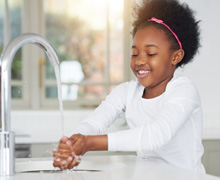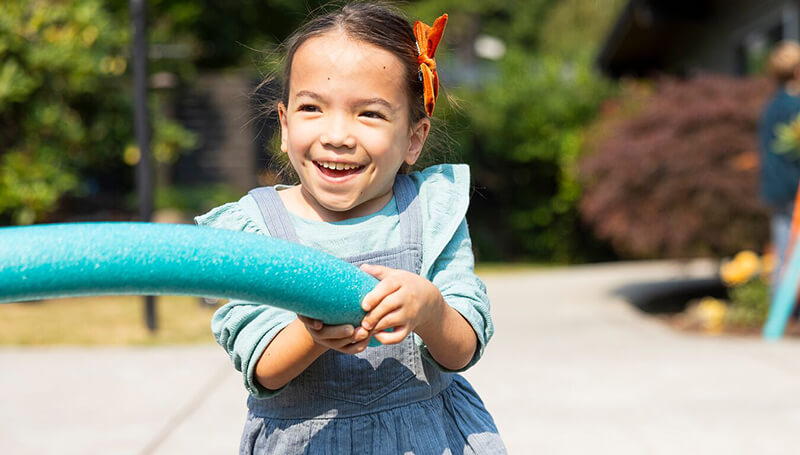Handwashing
You can download this article as a PDF (Amharic, Arabic, Chinese, Dari, English, Marshallese, Somali, Spanish, Ukrainian, Vietnamese).
 Good handwashing can help your family avoid colds, flu, diarrhea and other infections, like COVID-19. Follow these handwashing tips and teach them to your children.
Good handwashing can help your family avoid colds, flu, diarrhea and other infections, like COVID-19. Follow these handwashing tips and teach them to your children.
When to wash
Wash hands well before:
- Preparing or eating food
- Taking care of a wound or helping a sick person
- Touching your nose, mouth or eyes
and after:
- Using the bathroom
- Cleaning the house
- Changing diapers
- Touching a pet or animal, or their food or waste
- Playing outside
- Handling meat, fish or eggs
- Using tissue to wipe or blow your nose or your child’s nose
- Sneezing or coughing
- Taking care of a wound or helping a sick person
- Touching garbage
- Your hands look dirty
Wash your hands even more often if you are ill.
How to wash
Correct handwashing involves soap, water and rubbing. Follow these key steps:
- Wet your hands with clean, running water. The water can be warm or cold water.
- Put soap on your hands and rub the soap into a lather. Make sure you get the “in-between” places like between fingers, under the nails and the backs of hands and wrists.
- Scrub your hands for at least 20 seconds.
- Rinse well under clean, running water, while rubbing hands together.
- Dry hands well with a clean, dry towel or let them air dry.
When you don’t have soap and water, use hand sanitizer
- Buy alcohol-based hand sanitizer, like Purell, for washing hands when soap and water are not available. Make sure the hand sanitizer label says it contains at least 60% alcohol.
- Keep a bottle in the car, one at school and bring one along during outings. It helps clean hands when they don't look dirty.
- Read the label for how much gel to put in your hand. Rub your hands together, getting the gel in between fingers and on all parts of your hands. Keep rubbing until your hands feel dry – about 20 seconds.
- Closely watch young children when using hand sanitizer and store it out of their reach.
Teach your children to:
- Sneeze or cough into the inside of their arms instead of their hands. This helps prevent spreading germs.
- Keep fingernails clean.
- Avoid biting their nails.
- Keep hands and fingers out of their mouths and away from their eyes and nose.
Other tips
- Use colorful soap made for kids. Some come in fun scents or shapes that make washing hands fun.
- Have your child sing a favorite short song while soaping up. This helps to make sure they take enough time to wash well. Try the ABC song or “Twinkle, Twinkle Little Star.”
- Praise your child for remembering to wash or for doing a good job of washing.

